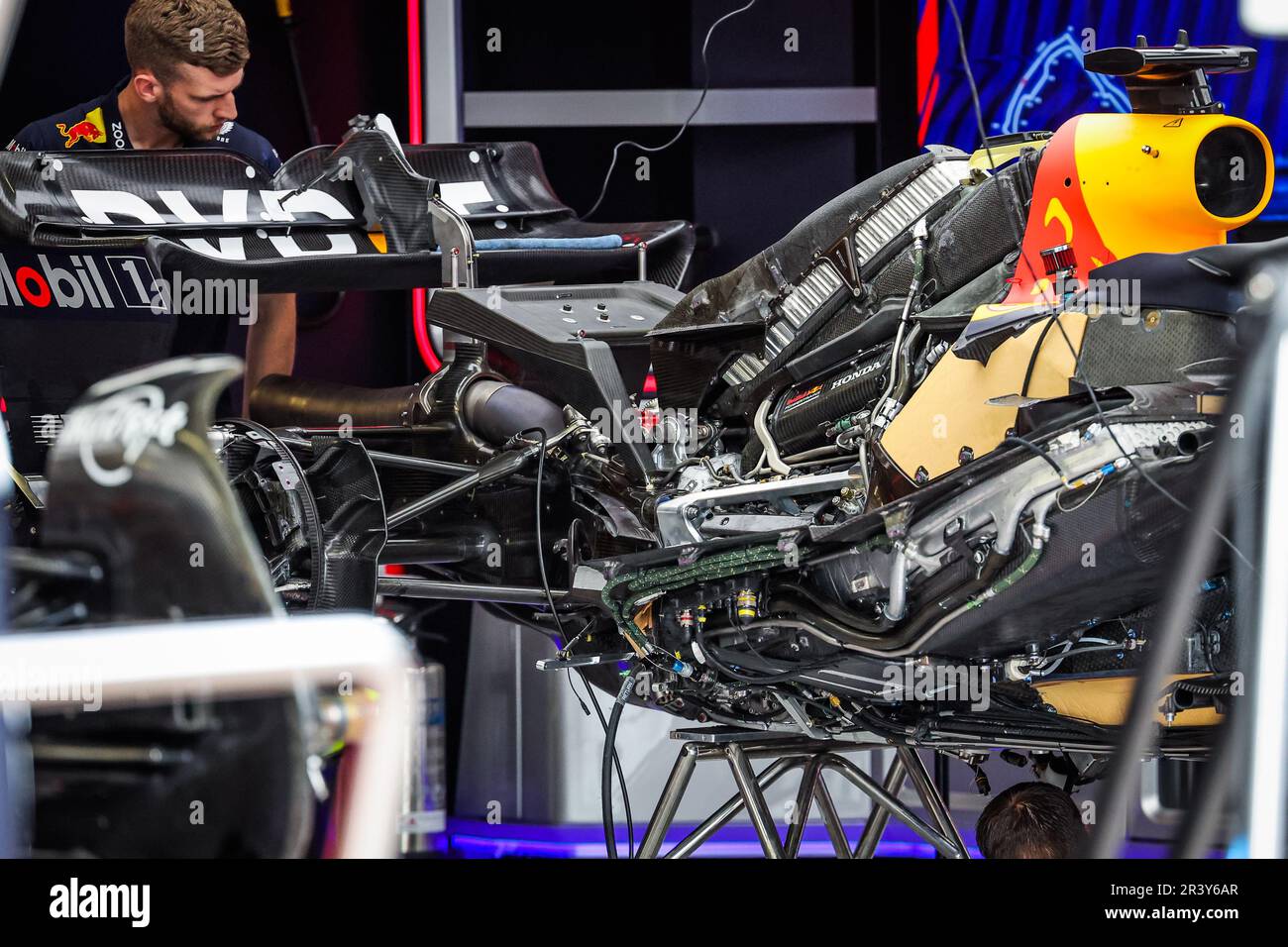Quite often with a successful integration of an aspect that was previously accepted as just routine normality, in this case the statement of "lower Cog is better" (in other words, making use of something both against conventional thinking and establishing that as a positive within a rule set) has been proven to define a different route to solving a problem.
Free thinking, or other description often attached to this. Stepping out of tbe ordinary etc.
Is Cog being consideration turned upsidedown here ? It would appear to offer different characteristics by raising it and possibly influence the low speed dynamics by forcing more roll,, possibly. Then to effectively migrate downwards under the influence of the floor and wing downforce exceeding the Cog element as speed climbs. This possibly to enact a transient load condition to the tire by driving a notionally "floating" effect.
Also to consider roll centre etc in chassis dynamics.
"In summary, though derived from kinematics, the concept of a roll centre goes far beyond the location of suspension linkages. It represents a powerful tool to control the forces and load transfer across the car. This is only a narrow slice of the full picture, as in this article, we explored the roll centre in a 2-dimensional context. In reality, race car suspension is a 3-D system, and one can’t merely consider forces in isolation. The roll centre must be regarded alongside kinematics and compliance, migration of the roll centre, tire flex, and other factors. Hopefully, this information offers insight into the nature of load transfer and can help you strengthen the intuition required to tackle more complex vehicle dynamics problems in the future." and quoted from here https://www.racecar-engineering.com/tec ... ll-centre/ as part of the "solution" in this RB series of chassis and the performance envelope it delivers.
Of course, everyone knows within these design team what these things do or good design practice to build into their car. Casual observation may not understand the complexity of these shifts though.
There is though, a very clear and prominent difference in how this RB team brings their design to the competition which others don't appear to have in their command.
Breaking the mould is normally looking at the same problem, then to reconsider the outcome by possibly using what other's have seen as faults to bring a evolved and successful performance solution.
Its very clear that these tires need hugely focussed, very concise and repeatable application of the forces expected to be taken by them, all to obvious effect in this chassis, while still,a mystery to their competitors.




